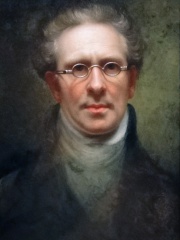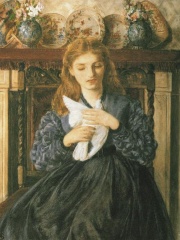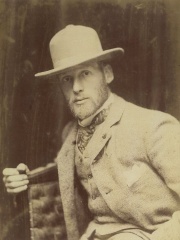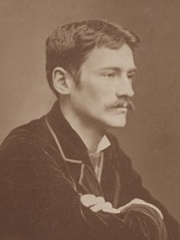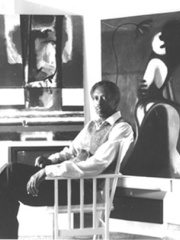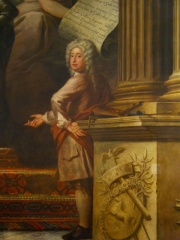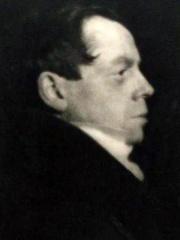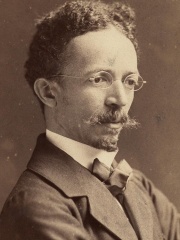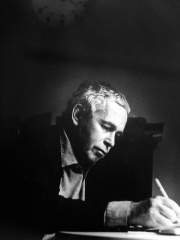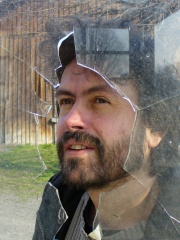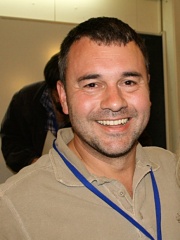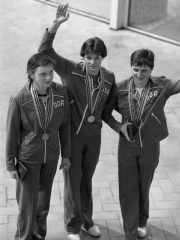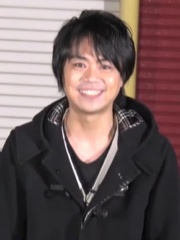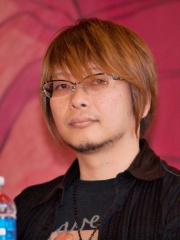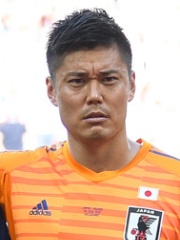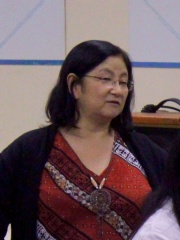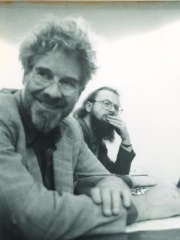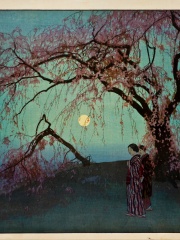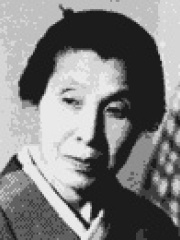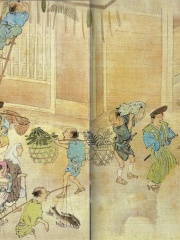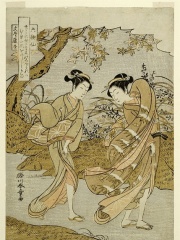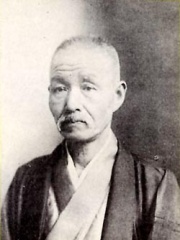Painter
Keiji Inafune
1965 - today
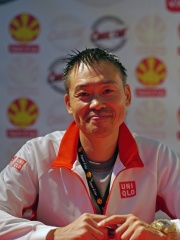
 Keiji Inafune
Keiji Inafune
Keiji Inafune (稲船 敬二, Inafune Keiji; born 8 May 1965) is a Japanese video game producer, character designer, game designer, and businessman. In 2009, he was chosen by IGN as one of the top 100 game creators of all time. Starting his career at Capcom in the late 1980s, his job was as an artist and illustrator. The first two games he worked on were the original Street Fighter and Mega Man in 1987. Read more on Wikipedia
His biography is available in 17 different languages on Wikipedia (up from 16 in 2024). Keiji Inafune is the 1,966th most popular painter (down from 1,964th in 2024), the 1,930th most popular biography from Japan (down from 1,705th in 2019) and the 32nd most popular Japanese Painter.
Memorability Metrics
Page views of Keiji Inafune by language
Among Painters
Among painters, Keiji Inafune ranks 1,966 out of 2,023. Before him are Rembrandt Peale, Rebecca Solomon, Tom Roberts, Thomas Dewing, Ahmed Al Safi, and Eugene J. Martin. After him are James Thornhill, William Nicholson, Henry Ossawa Tanner, El Kazovsky, Mike Kelley, and Howard Hodgkin.
Most Popular Painters in Wikipedia
Go to all RankingsRembrandt Peale
1778 - 1860
HPI: 51.56
Rank: 1,960
Rebecca Solomon
1832 - 1886
HPI: 51.52
Rank: 1,961
Tom Roberts
1856 - 1931
HPI: 51.47
Rank: 1,962
Thomas Dewing
1851 - 1938
HPI: 51.44
Rank: 1,963
Ahmed Al Safi
1971 - Present
HPI: 51.41
Rank: 1,964
Eugene J. Martin
1938 - 2005
HPI: 51.16
Rank: 1,965
Keiji Inafune
1965 - Present
HPI: 51.14
Rank: 1,966
James Thornhill
1675 - 1734
HPI: 51.02
Rank: 1,967
William Nicholson
1872 - 1949
HPI: 51.00
Rank: 1,968
Henry Ossawa Tanner
1859 - 1937
HPI: 50.96
Rank: 1,969
El Kazovsky
1948 - 2008
HPI: 50.85
Rank: 1,970
Mike Kelley
1954 - 2012
HPI: 50.74
Rank: 1,971
Howard Hodgkin
1932 - 2017
HPI: 50.65
Rank: 1,972
Contemporaries
Among people born in 1965, Keiji Inafune ranks 464. Before him are Sabine Braun, Michal Šanda, Gerhard Rodax, Bogna Koreng, Johan Rockström, and Richard K. Morgan. After him are Rica Reinisch, Pascal Tayot, Gilles Panizzi, Yoshikazu Isoda, WestBam, and Georgios Bartzokas.
Others Born in 1965
Go to all RankingsSabine Braun
ATHLETE
1965 - Present
HPI: 51.30
Rank: 458
Michal Šanda
WRITER
1965 - Present
HPI: 51.21
Rank: 459
Gerhard Rodax
SOCCER PLAYER
1965 - 2022
HPI: 51.20
Rank: 460
Bogna Koreng
JOURNALIST
1965 - Present
HPI: 51.19
Rank: 461
Johan Rockström
ENGINEER
1965 - Present
HPI: 51.19
Rank: 462
Richard K. Morgan
WRITER
1965 - Present
HPI: 51.14
Rank: 463
Keiji Inafune
PAINTER
1965 - Present
HPI: 51.14
Rank: 464
Rica Reinisch
SWIMMER
1965 - Present
HPI: 51.13
Rank: 465
Pascal Tayot
ATHLETE
1965 - Present
HPI: 51.11
Rank: 466
Gilles Panizzi
RACING DRIVER
1965 - Present
HPI: 51.10
Rank: 467
Yoshikazu Isoda
SOCCER PLAYER
1965 - Present
HPI: 51.09
Rank: 468
WestBam
MUSICIAN
1965 - Present
HPI: 51.08
Rank: 469
Georgios Bartzokas
POLITICIAN
1965 - Present
HPI: 51.07
Rank: 470
In Japan
Among people born in Japan, Keiji Inafune ranks 1,930 out of 6,245. Before him are Daisuke Namikawa (1976), Masahiro Iwata (1981), Yosuke Matsumoto (1990), Hiroyuki Sawada (1974), Oh! great (1972), and Eiji Kawashima (1983). After him are Minoru Takenaka (1976), Makoto Takeya (1977), Naomi Munakata (1955), Yoshikazu Isoda (1965), Takehiro Kato (1974), and Christopher Zeeman (1925).
Others born in Japan
Go to all RankingsDaisuke Namikawa
ACTOR
1976 - Present
HPI: 51.16
Rank: 1,924
Masahiro Iwata
SOCCER PLAYER
1981 - Present
HPI: 51.15
Rank: 1,925
Yosuke Matsumoto
SOCCER PLAYER
1990 - Present
HPI: 51.15
Rank: 1,926
Hiroyuki Sawada
SOCCER PLAYER
1974 - Present
HPI: 51.14
Rank: 1,927
Oh! great
COMIC ARTIST
1972 - Present
HPI: 51.14
Rank: 1,928
Eiji Kawashima
SOCCER PLAYER
1983 - Present
HPI: 51.14
Rank: 1,929
Keiji Inafune
PAINTER
1965 - Present
HPI: 51.14
Rank: 1,930
Minoru Takenaka
SOCCER PLAYER
1976 - Present
HPI: 51.13
Rank: 1,931
Makoto Takeya
SOCCER PLAYER
1977 - Present
HPI: 51.12
Rank: 1,932
Naomi Munakata
MUSICIAN
1955 - 2020
HPI: 51.11
Rank: 1,933
Yoshikazu Isoda
SOCCER PLAYER
1965 - Present
HPI: 51.09
Rank: 1,934
Takehiro Kato
SOCCER PLAYER
1974 - Present
HPI: 51.08
Rank: 1,935
Christopher Zeeman
MATHEMATICIAN
1925 - 2016
HPI: 51.07
Rank: 1,936
Among Painters In Japan
Among painters born in Japan, Keiji Inafune ranks 32. Before him are Hiroshi Yoshida (1876), Uemura Shōen (1875), Maruyama Ōkyo (1733), Katsukawa Shunshō (1726), Utagawa Toyokuni (1769), and Hashimoto Gahō (1835).
Hiroshi Yoshida
1876 - 1950
HPI: 58.73
Rank: 26
Uemura Shōen
1875 - 1949
HPI: 58.64
Rank: 27
Maruyama Ōkyo
1733 - 1795
HPI: 58.26
Rank: 28
Katsukawa Shunshō
1726 - 1793
HPI: 57.62
Rank: 29
Utagawa Toyokuni
1769 - 1825
HPI: 57.28
Rank: 30
Hashimoto Gahō
1835 - 1908
HPI: 57.00
Rank: 31
Keiji Inafune
1965 - Present
HPI: 51.14
Rank: 32
